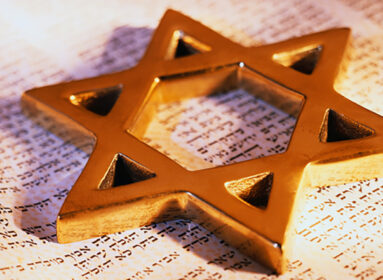
By Rabbi Tzvi Hersh Weinreb
A
s the very first humans, Adam and Eve’s reactions to their surroundings and to each other had no precedent. As the biblical narrative proceeds, we begin to learn about how Adam and Eve react to the world around them. They relate to each other fondly. They yield to temptation, and, finally, they suffer the horrible pain of exile.
We eventually learn that they become parents, but we know nothing about how they went about the task of parenting. The Torah provides no answers. Rather, the Torah proceeds to tell us a bit about their two sons, Cain and Abel, and about how Cain murdered Abel. But there is nary a word in the Torah about Adam and Eve’s reaction to this horrible event. After all, they had never experienced death. They knew not what death meant.
A Midrash fills in the gap: When Abel was killed, Adam and Eve were stunned. They sat and wept and mourned but did not know what to do. The watchdog of Abel’s sheep guarded his corpse, protecting it from the beasts of the wild and from the birds soaring above. Then, a raven a raven that had himself experienced the death of its mate descended from the sky. The raven declared, “I will teach Adam what to do.” He took the body of the dead bird, dug a small ditch in the earth, and proceeded to bury it before Adam and Eve’s eyes. Adam then said to Eve, “Let us do what the raven did!” They took Abel’s corpse and buried it. (Yalkut Shimoni, 38)
I first encountered this Midrashic passage in a masterful Yizkor sermon delivered by Rabbi Moshe Avigdor Amiel, a former chief rabbi of Tel Aviv, who passed away in 1945.
This sermon is included in the first volume of Rabbi Amiel’s Derashot El Ami. There, Rabbi Amiel eloquently elaborates upon the story, stressing the helplessness that Adam and Eve experienced in the face of a phenomenon that they had never previously encountered. They cannot accept the finality of Abel’s death. That is, until the raven comes along.
Rabbi Amiel points out that Jewish tradition sees the raven as the very symbol of cruelty. He cites the verse in Psalms (147:9), which is part of a hymn to the Almighty who gives “to the raven’s brood what they cry for.” Apparently, the raven ignores even its own young. To which I would add the verse in Job 38:41, which reads, “Who provides food for the raven when his young cry out to God and wander about without food?”
The message of Rabbi Amiel’s sermon is this: Humans must not emulate the raven’s response to death. For humans, the dead are not merely “dead and buried.” The point of the Yizkor ceremony is to perpetuate the memory of the dead, to keep them alive in our own consciousness. Human life is too precious to be forgotten. The raven may be cruel to its young, but we must affectionately care for our young. The raven digs a grave and cruelly forgets what it buried there. But we remain aware of those who, although consigned to the grave, live on in our hearts and minds.
The late Rabbi Shlomo Zalman Auerbach noted that Judaism believes in techiyat ha’metim, that the dead will live again. He pointed out that in the relatively brief second blessing of the Shemoneh Esreh, we mentioned the concept of resurrection no less than six times!
Rabbi Amiel sees the raven as the irredeemable embodiment of cruelty. But I suggest that the raven appears more than once in scripture. In fact, it plays a role in next week’s Torah portion when Noah sends it out of the Ark on a futile mission. Moreover, much later in history, the ravens prove capable of a remarkably admirable task. I refer to the passage in Kings I 17:2-7. There, the story is told of the prophet Elijah who informs King Ahab that there soon would be “no dew or rain except at my bidding.” The Almighty then instructs Elijah to go into hiding by the Wadi Kerit, just east of the Jordan. There, he will be able to drink from the wadi, and will be fed by the ravens. Elijah obeys, and lo and behold, “the ravens brought him bread and meat every morning and every evening, and he drank from the wadi.”
Some commentaries insist that the ravens were chosen as the Almighty’s messengers to impress upon Elijah that he was as cruel as are ravens by prophesizing drought and famine. Others suggest this episode demonstrates that even ravens can overcome their instinctive cruelty and become noble benefactors of a starving human. The raven thus becomes a model for teshuva, for the human capacity to overcome even one’s darkest instincts. No longer need the raven represent callous disregard for the dead. After feeding Elijah, the raven is transformed into a symbol of heroic rescue, of life-sustaining forces.
We can all learn the dual lesson of eternal respect for the dead and compassionate regard for the living.
Rabbi Tzvi Hersh Weinreb is the executive Vice President, emeritus of the Orthodox Union.








 Southern New England Jewish Ledger
Southern New England Jewish Ledger









